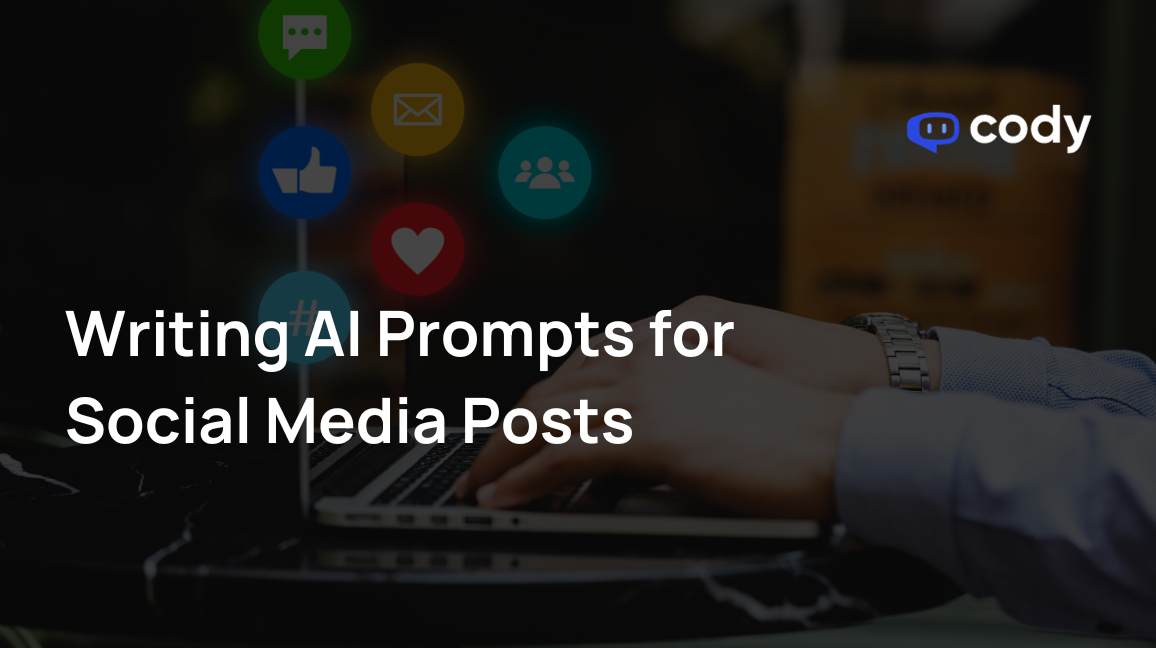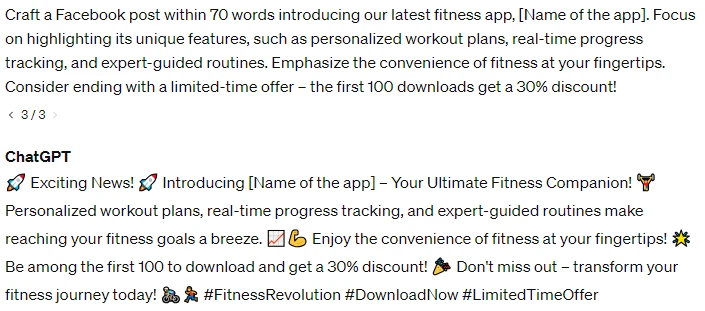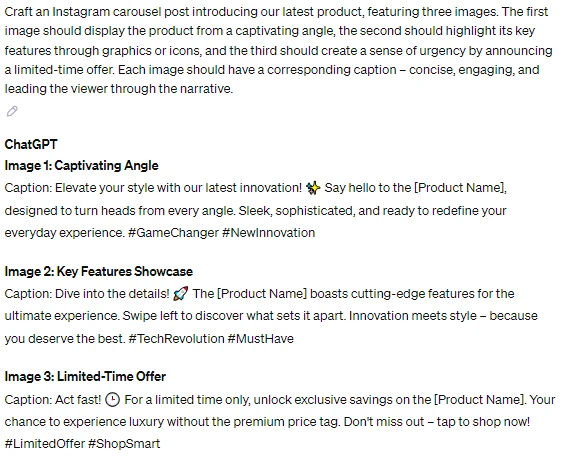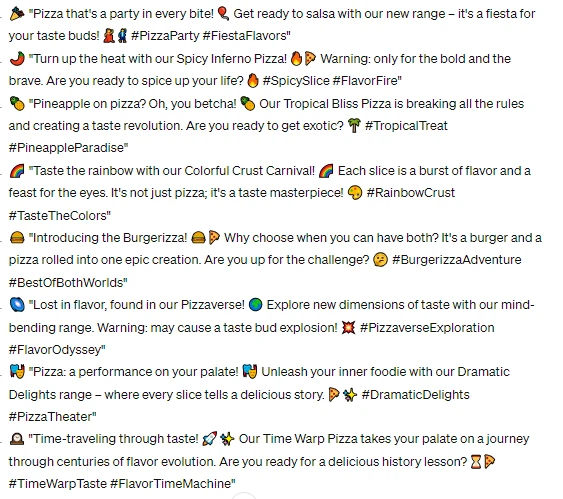
AI in the Social Media Market is expected to grow at a CAGR of 28.04% to reach $5.66 billion by 2028. AI brings super cool tools that make it easier to be creative and simplify making content. When you come up with a great AI prompt, you’re giving the AI a roadmap to create content that vibes with your brand and clicks with your audience.
Artificial intelligence is not a substitute for human intelligence; it is a tool to amplify human creativity and ingenuity.
– Fei-Fei Li, Co-Director of the Stanford Institute for Human-Centered Artificial Intelligence and IT Professor at the Graduate School of Business
In this blog, we’ll delve into the strategies and techniques for crafting the best AI prompts that captivate your audience and elevate your social media presence.
1. Define Your Objective
Every social media post should have a purpose. Whether it’s to inform, entertain, or promote, clearly define your objective before creating an AI prompt. It helps the AI create content that’s right on target with what you’re aiming for. For example, if you’re promoting a new product, your prompt could focus on highlighting its unique features or offering a limited-time discount.

In this example, the objective is clearly defined: to inform and attract users to download the new fitness app. The AI prompt specifies key features, promotes a limited-time offer, and even guides the tone to align with the app’s brand identity.
2. Specificity is Key
When it comes to giving instructions for AI, the nitty-gritty details matter a lot. Instead of being vague, be super specific and descriptive in your prompts. It helps the AI create spot-on content, saves you time by cutting down on revisions, and keeps everything on track with your goals.
For instance, if your AI prompt is for a Facebook post about a new recipe, tell it all about the ingredients and the step-by-step cooking process, and make sure to describe the mouthwatering sensory experience you want people to feel. The more detailed your prompt, the more accurate and compelling the AI-generated content will be.
Instead of a generic instruction, such as “Create a post about our new product,” consider something more precise like “Generate a tweet highlighting the innovative features of our new XYZ product, emphasizing its impact on solving a common problem for our target audience.”
3. Know Your Audience
Getting what your audience is about is key to nailing social media content. Make your AI prompts match their likes, interests, and how they talk – that’s the key.
Consider factors such as age, demographics, and psychographics when coming up with prompts. If they’re into jokes, throw in some humor. If they like learning stuff, make sure your prompts are full of useful insights.
4. Establish the Format
So, each social media platform has its vibe, right? Make sure you clearly define the format you’re aiming for in your AI prompt. Customizing it ensures the AI creates content that totally vibes with the platform, making it look and read awesome.

In this example, the Instagram prompt emphasizes the visual nature of the platform, instructing the AI to create a multi-image post with specific content for each image and caption.
5. Embrace Creativity and Originality
Every day, social media is like a content explosion, and standing out is no joke. Spice up your AI prompts with creativity and originality to grab attention. Skip the clichés and boring stuff—get the AI to create cool and unique content. Try playing with words, throwing in some puns, and going for unconventional ideas to make your posts stick in people’s minds.
The following could be the result when you create AI prompts for social media posts for a new range of pizzas with wordplay, puns, and unique ideas.

6. Tailor Tone and Style
Making sure your social media speaks with the same vibe is key for your brand’s personality. Just nail down the tone you’re after in your AI prompt – whether it’s chatty, classy, funny, or just straight-up informative.
For instance, you might instruct the following:
Craft a tweet about our upcoming event with an upbeat and conversational tone, encouraging followers to express excitement using emojis.
This level of specificity ensures that the AI understands and replicates your brand’s unique voice.
7. Leverage Visual Language
Social media is a visual-centric platform, and combining AI-generated text with visually appealing elements can amplify the impact of your posts. When crafting prompts, consider how the generated content will complement or enhance accompanying images, videos, or graphics. Get the AI to spin some lively tales, stir up emotions, and paint a word picture that grabs your audience’s attention.
Here’s an example of how you might encourage AI to generate a captivating and emotionally charged description for a social media post about an awesome travel spot.

8. Optimize Length as per the Social Media Platform
Given the short attention spans on social media, setting word limits for your AI prompts is a strategic move. Specify the desired length for your post, be it a tweet, caption, or longer-form post. This not only ensures concise content but also aligns with the platform’s character restrictions.
Here’s an example:
Generate a Twitter post for our latest product image, focusing on its key benefits and ending with a call-to-action to visit our website.

Generate a Twitter post in 280 characters for our latest product image, focusing on its key benefits and ending with a call-to-action to visit our website.

Note that when the AI prompt doesn’t specify the character limit, it generates a post exceeding Twitter’s word restrictions. In contrast, specifying a word limit in the prompt results in a perfectly tailored post that complies with Twitter’s constraints.
9. Incorporate Call-to-Action (CTA)
Make your social media posts do something! Ask people to like, share, comment, or check out your website. Use straightforward and exciting prompts in your AI messages to get them involved. Whether it’s throwing them a poll, getting them to spill thoughts in the comments, or checking out a cool product, a well-crafted CTA can significantly impact the success of your social media strategy.
Example 1:

Example 2:

So, in the first example, where there’s no clear “Call to Action” (CTA), the post talks about the product but doesn’t really tell users what to do next. Now, in the second example with a CTA, it’s like, “Hurry up!” There’s this feeling of urgency, pushing users to check out the website ASAP for those time-limited deals. The second one is way more likely to get people excited and join in on the flash sale action.
Conclusion
Coming up with the best AI prompts for your social media posts is like this ever-changing thing that needs a mix of smart thinking, creativity, and knowing your audience. Set clear goals, tweak your content to what your audience digs, be creative, and get the right length and format. That’s how you use AI magic to improve your social media game. And it’s not just about putting content out there; it’s about making a real connection, getting people involved, and building a great community around your brand. With AI getting even better, there’s a ton of exciting possibilities to create social media content that sticks.
Read More: 20 Biggest AI Tool and Model Updates in 2023 [With Features]

